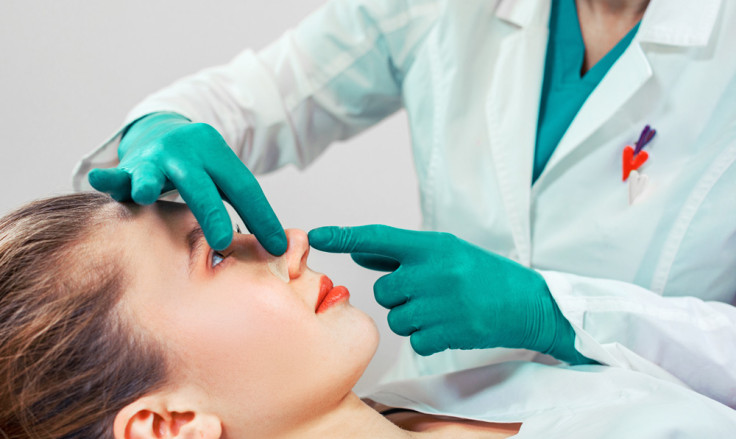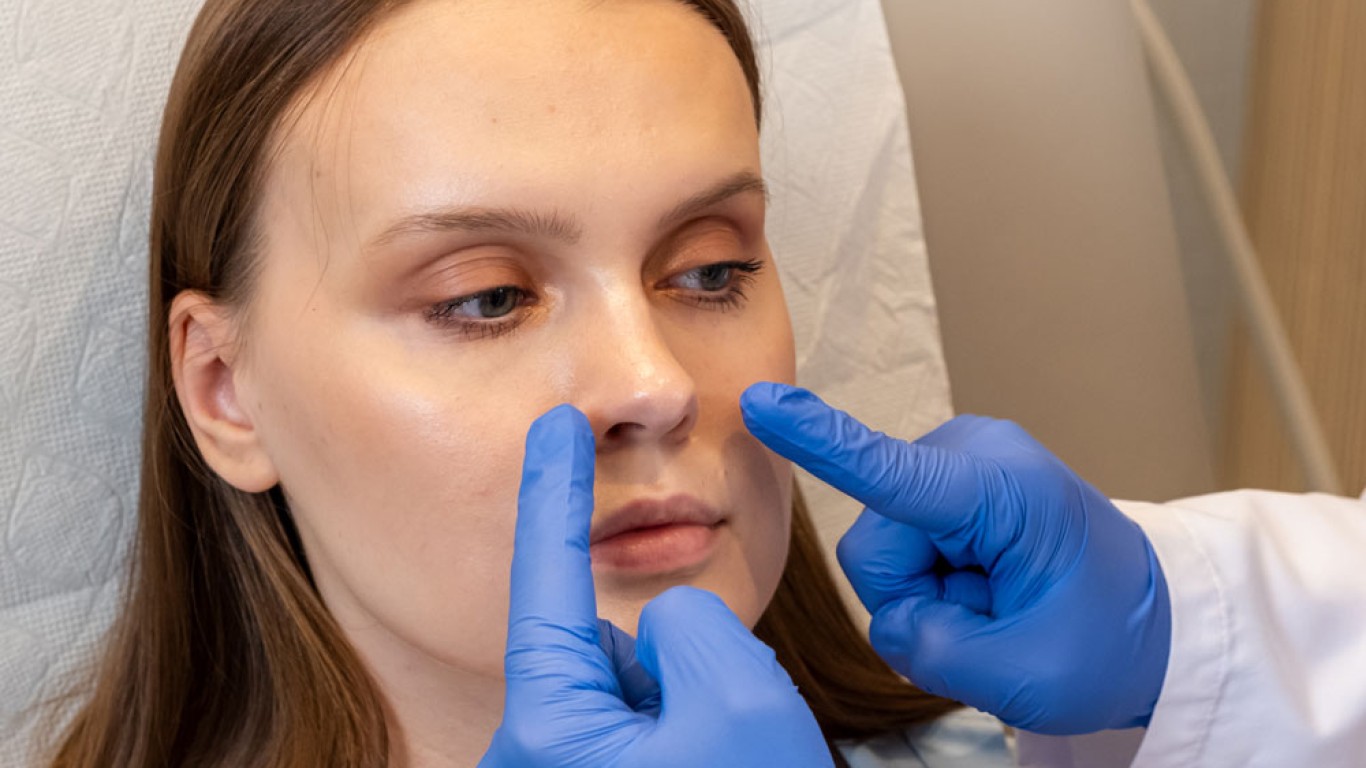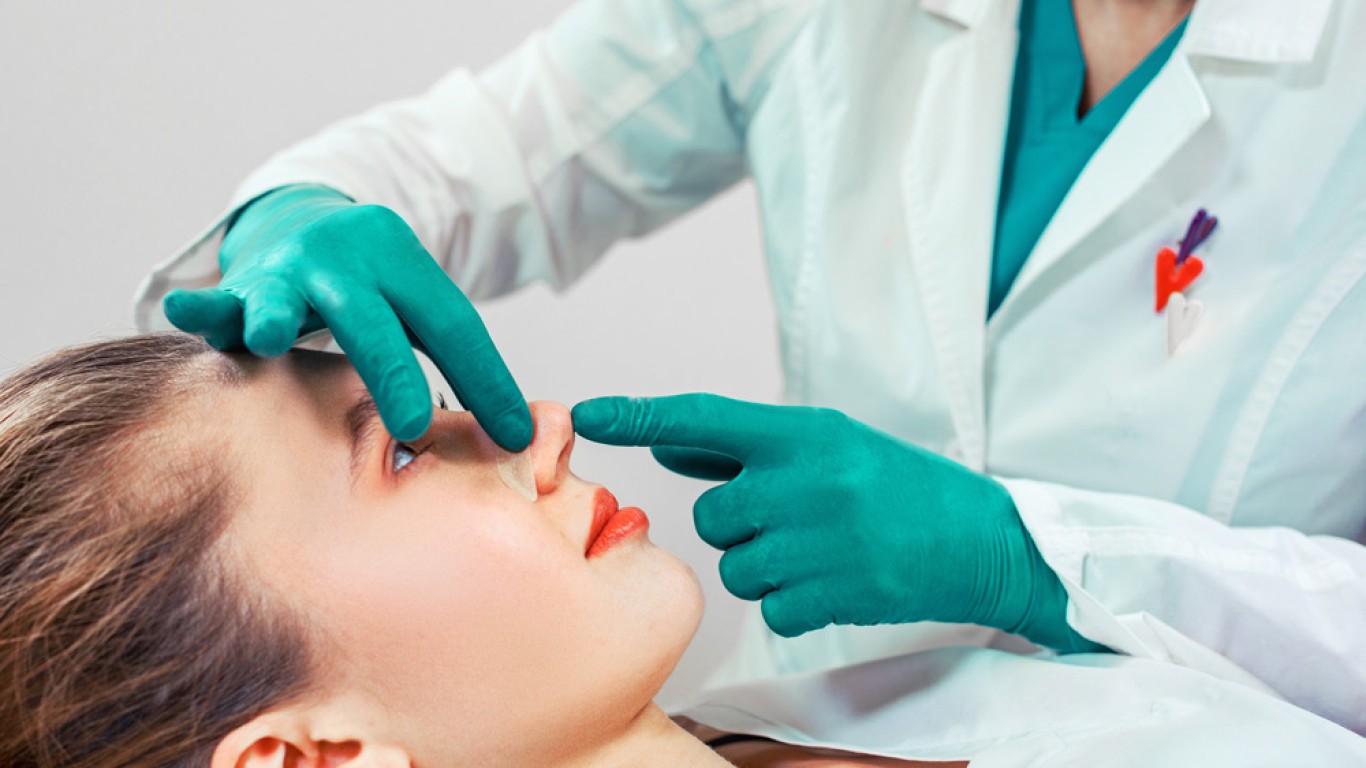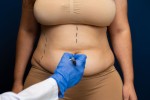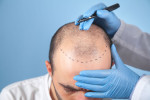Saddle nose deformity is a sunken or collapsed nose bridge. It creates a distinctive concave shape that affects both appearance and nasal function. For many, saddle nose is not only a cosmetic concern but also a cause of breathing difficulties. Surgery offers a reliable solution by restoring structure, function, and harmony to the nose. This article will explore what the saddle nose deformity is. Learn how it develops, and how surgery corrects the deformity step by step.
Understanding Saddle Nose
Saddle nose occurs when the support structure of the nose weakens or is damaged. The bridge of the nose collapses inward, creating a flattened profile. Causes include trauma, untreated infections, previous surgery, or certain medical conditions. In some cases, genetics may also play a role. The deformity ranges in severity, from mild indentation to significant collapse. Besides cosmetic changes, many patients experience blocked airflow and reduced nasal stability. Saddle nose surgery is the most effective way to correct these concerns.
Why People Seek Treatment for Saddle Nose Deformity
Patients with saddle nose often report both functional and emotional challenges. Breathing difficulties are common because the nasal passage loses support. In addition, the flattened profile may affect confidence and self-image. Many feel their nose looks disproportionate compared with the rest of the face. Correcting saddle nose restores balance. It can improve not only appearance, but also comfort. Altogether, surgery provides a lasting solution for those struggling with the deformity.
How Surgery Corrects Saddle Nose
The procedure focuses on rebuilding the nasal bridge with added support. Cartilage grafts are often used, taken from the septum, ear, or rib. These grafts provide structure, lifting the bridge into a more natural position. In severe cases, bone grafts or implants may be required. The surgeon carefully sculpts the grafts to restore shape and symmetry. Internal adjustments will also improve airflow, and address breathing difficulties.
The Procedure Step by Step
The surgery is performed under general anaesthesia. The procedure typically lasts two to four hours, depending on complexity.
- Firstly, incisions are made either inside the nose or across the columella.
- Next, the weakened nasal framework is exposed and prepared for reconstruction.
- Cartilage or bone grafts are placed to rebuild the bridge and restore height.
- The grafts are shaped and secured for stability.
- Once the structure is rebuilt, the incisions are closed with fine sutures.
- Finally, dressings or splints may be applied to support healing.
Recovery After Saddle Nose Surgery
Recovery requires patience but is manageable with proper care. Most patients experience swelling and mild congestion during the first week. Nasal splints or dressings are usually removed after a week or two. Light activities can resume within days, though strenuous exercise should be avoided. Swelling gradually subsides, and results become clearer over time. Breathing improves steadily as internal tissues heal. Within a few months, the nose feels more stable and natural. Altogether, recovery brings both functional relief and aesthetic satisfaction.
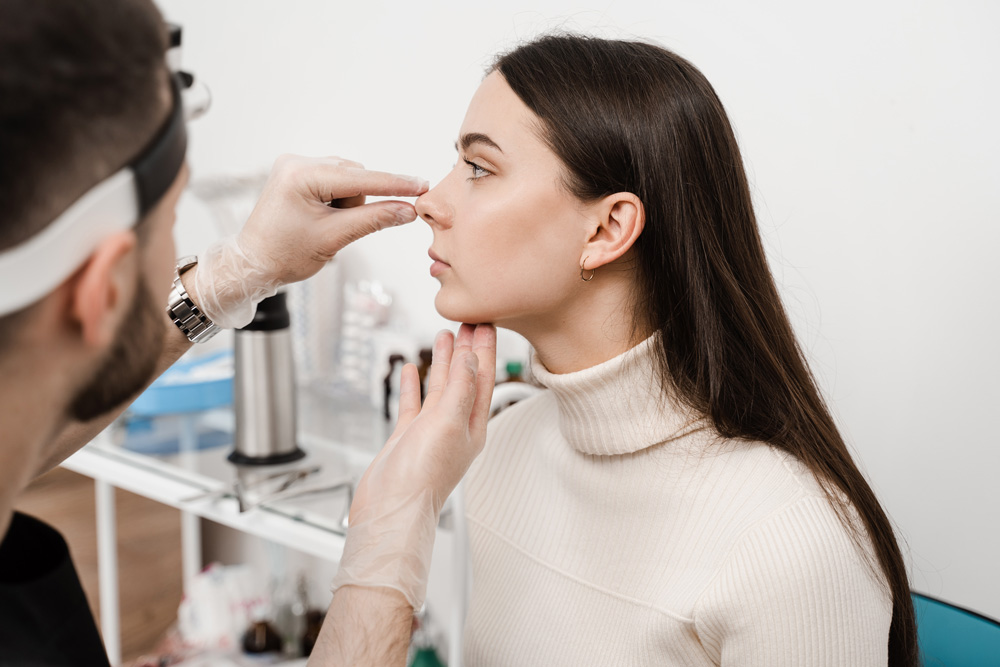
Benefits of Surgery for Saddle Nose
The benefits of this procedure surgery are both physical and emotional. Breathing is often easier thanks to improved nasal support. The restored bridge creates a balanced profile, enhancing facial harmony. Patients report greater confidence in photographs and social settings. Moreover, the results are long-lasting, especially when cartilage grafts are used. Comparatively, surgery offers more predictable outcomes than non-surgical alternatives. Ultimately, saddle nose correction provides lasting improvements in quality of life.
What’s The Cost in 2025?
The cost of saddle nose surgery varies depending on severity and location. In the UK, procedures often range between £6,000 and £12,000. In the USA, costs may exceed £15,000, particularly for complex reconstructions. Turkey remains a popular destination for medical tourism, with prices averaging £3,000 to £6,000. Because every case is unique, the final pricing will depend on individual surgical requirements.
Saddle Nose Surgery vs Standard Rhinoplasty
Although this procedure is a form of rhinoplasty, it is more complex than cosmetic reshaping. Standard rhinoplasty focuses on changing the size or shape of the nose for aesthetic reasons. Saddle nose correction, however, rebuilds structure that has collapsed, often requiring grafts. In many cases, the procedure improves both function and appearance simultaneously. Understanding the difference helps patients appreciate the precision and expertise required for saddle nose surgery.
Psychological Impact of Correcting Saddle Nose
Saddle nose surgery offers clear physical and significant emotional benefits. Many patients describe a renewed sense of confidence after seeing their profile restored. The nose is a central facial feature, and changes to its shape can affect self-esteem. Correcting saddle nose often allows people to feel more comfortable in social and professional situations. Beyond appearance, improved breathing can also boost energy, mood, and overall quality of life. Altogether, the psychological impact highlights why surgery is considered transformative by so many patients.
Conclusion
Saddle nose deformity can affect confidence, comfort, and quality of life. Surgery provides an effective solution by rebuilding the nasal bridge, improving both structure and function. From preparation to recovery, each step is carefully designed for lasting results. Costs vary, but many patients describe the improvements as life-changing. In conclusion, surgery for saddle nose restores balance, breathing, and self-assurance.
For more information and to book a consultation visit the ACIBADEM Beauty Center.
Frequently Asked Questions
It can result from trauma, infection, surgery, or certain medical conditions.
The procedure typically lasts between two and four hours under general anaesthesia.
Yes, results are long-lasting, particularly when cartilage grafts are used.
Prices range from £3,000 in Turkey to over £15,000 in the USA.
Yes, restoring nasal structure improves airflow and reduces breathing difficulties.
